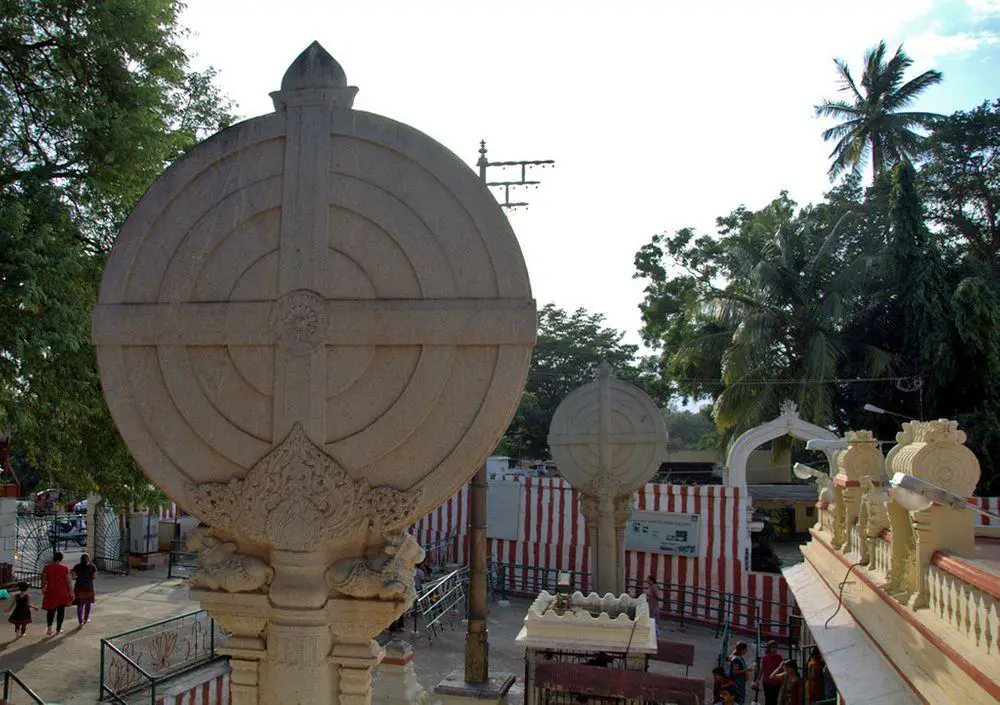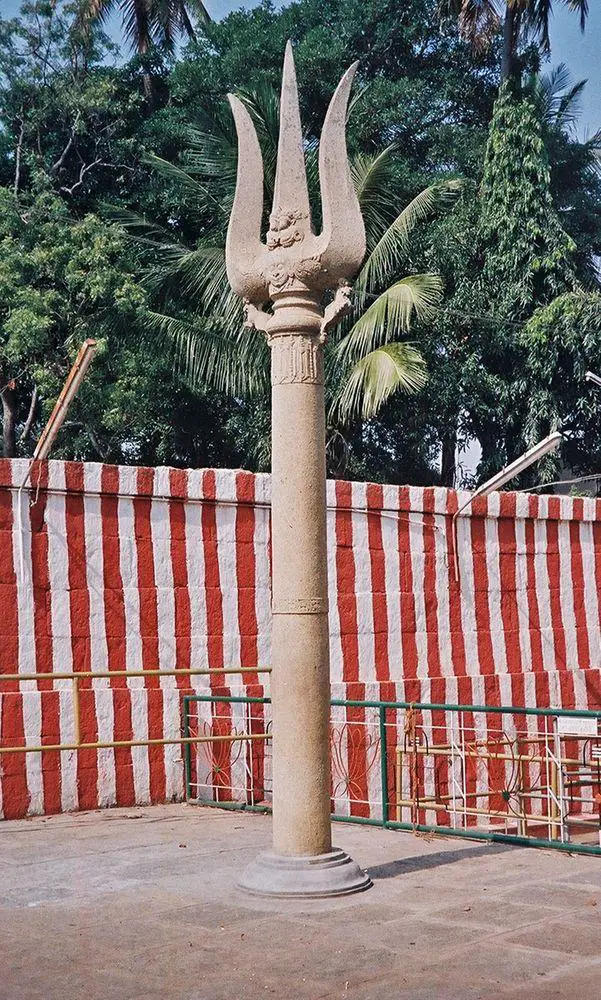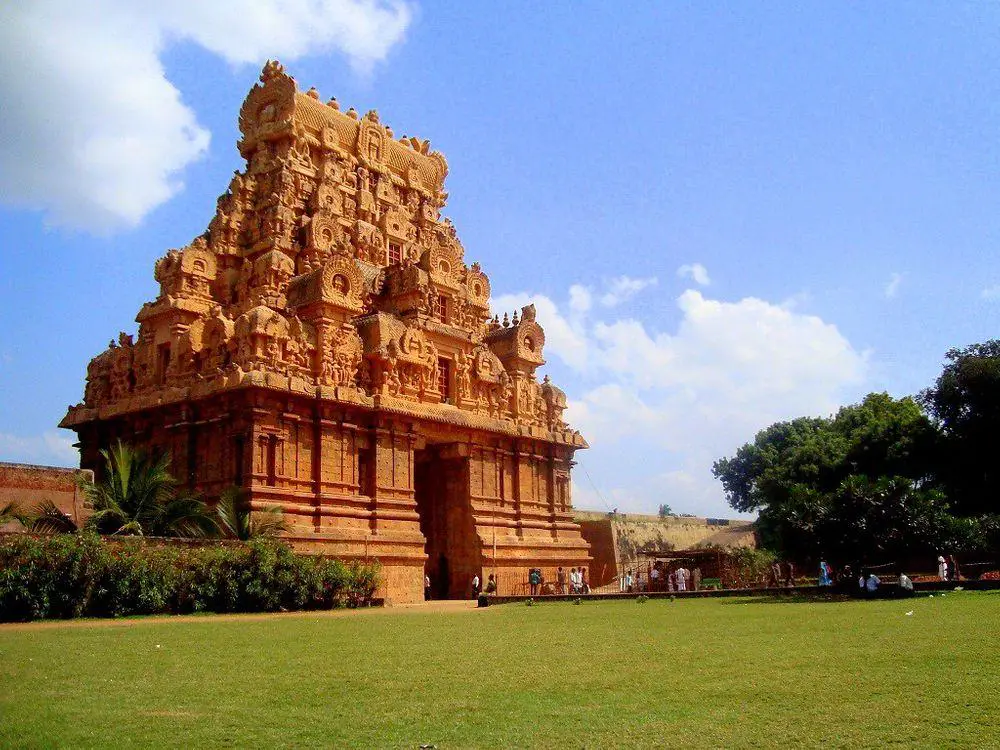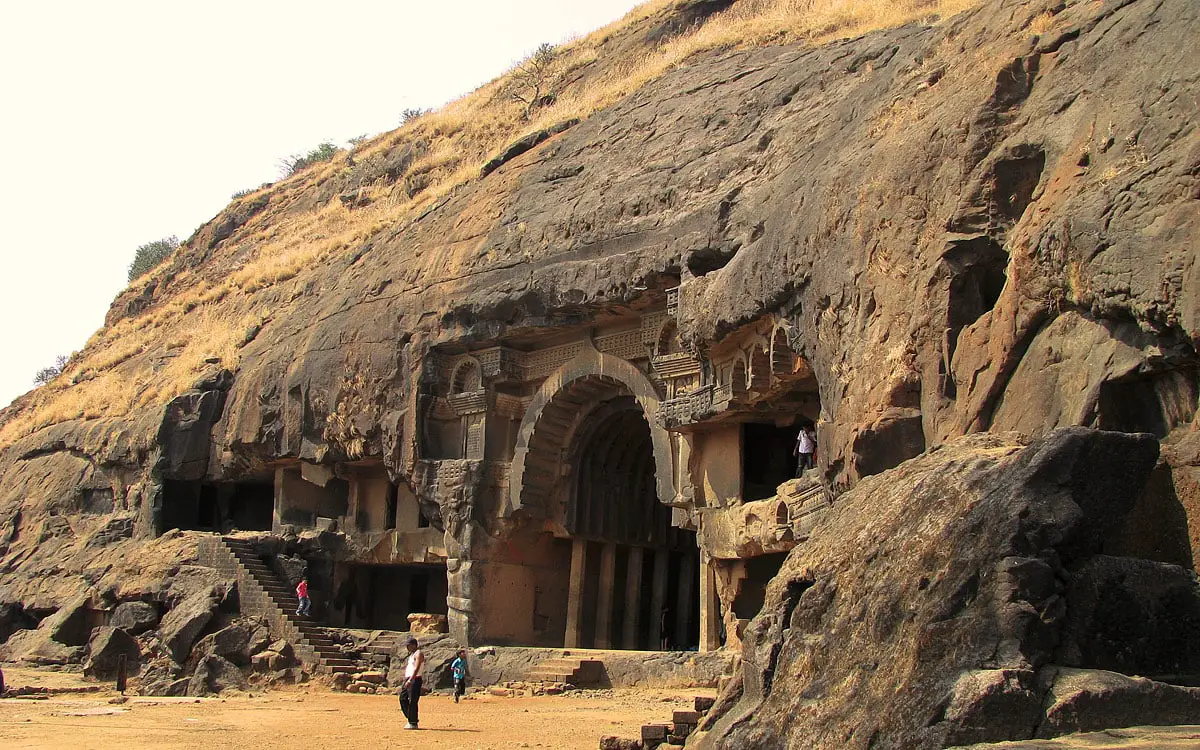World 🢖 Asia 🢖 India 🢖 Karnataka
Hindu shrines 🢔 Religious architecture 🢔 Architectural wonders 🢔 Categories of wonders
Wonder
Gavi Gangadhareshwara

 In short
In short
As if making monolithic rock-cut temples is not complex enough, ancient Indian architects and stone cutters outclassed themselves when making the Gavi Gangadhareshwara Temple in the 9th century AD. Temple has been planned in such a way that sun rays illuminate the shrine only for a short while in two periods of the year, including the time of the religious festivity Makar Sakranti.
 44.3%
44.3%
GPS coordinates
Alternate name
Age
Religion
Map of the site
If you see this after your page is loaded completely, leafletJS files are missing.
 In detail
In detail
Mysterious discs
Gavi Gangadhareshwara Temple originally was a small temple cut out of monolithic rock around the 9th century. It is devoted to Lord Shiva and has typical attributes of Shaivite temples – including the Nandi ox in the front of the temple and the main shrine – Sivalinga – inside the temple.
More unique are some other sculptures. The depiction of Agni – god of fire – is one of the few in Southern India.
By far the most interesting feature of this temple though are two enormous rock-cut discs placed on the top of columns in the front yard of the temple. One disc is called Surya Pana (Sun disc) and the other – Chandra Pana (Moon disc), both have identical size with the diameter of some 2 m. Each of them rests on two smaller sculptures of Nandi bulls. Both discs have been produced in very high quality.

Discs are located parallel to each other. On both sides of the discs, there are drawn orthogonal lines resembling crosshairs in the eye of the telescope or marks of the target.
There is not known no other temple in India with such discs. It is puzzling also that discs have crosshairs on each side. Discs are not aligned to cardinal positions of the courtyard either – their location seems to be occasional. The initial purpose of these discs is not remembered by the locals.
Sunshine for the festival
Nowadays the temple is well known due to another unique peculiarity – every year in the afternoon of January 14 for some 20 minutes (from 4:55 to around 5:15 PM) the Sun shines on Shivalinga.
This coincides with important local festival – Makar Sakranti – attracting thousands of people to Bangalore. This festivity marks the entry of the Sun into Capricorn – Makara – and is celebrated as harvest festivity.
Sunlight comes from the southwestern part of the temple, passes through an arch, and two windows that are placed perpendicular to each other. Then the rays pass between the horns of the sculpture of the Nandi bull and then illuminate the shrine.
Not all though know that the Sun shines on the shrine two times per year – from the 13th to 16th January and from the 26th November to the 2nd December. In general, the skies at this time of the year are clear.
Old paintings show different scene
Several old paintings, including two drawings of the British artists Thomas and William Daniell from 1792 show though somewhat different architecture and disposition of elements of this unique temple two centuries ago.
Paintings show that the area around the temple was barren and devoid of vegetation. Nowadays the view to the east is obscured by trees.
Temple has been supplemented by new walls and enclosures. This has been done with a great skill to change the earlier dates of the illumination to contemporary January 14.
Later there has been added also a bronze pillar – Dhwajasthambha. Also, this bronze pillar has an unclear function – the shadow of this pillar sometimes falls on the vertical mark on one of the discs. It is possible that Dhwajasthambha was installed to mark the entry of the Sun into Cancer.
Further analysis (1) of these old drawings shows that earlier the Sun illuminated the shrine during both the winter solstice and summer solstice.
Mysterious discs in the courtyard most likely were aligned to mark the summer solstice.
References
- P. Jayanth Vyasanakere, K Sudeesh and B.S. Shylaja, Astronomical Significance of the Gavi Gangadhareshwara temple in Bangalore. Current Science, Vol.95, No. 11, 10 December 2008.
- Painting by James Hunter, 1792.
- Painting by Thomas and William Daniell, 1792.
 Linked articles
Linked articles

Wonders of India
India is the seventh-largest country in the world by area, and, naturally, such a large area contains a huge amount of exciting attractions…
Wondermondo considers that India is the second richest center of architectural heritage in the world after Europe and maybe no single country in the world can match it in this respect.

Hindu shrines
Hinduism is one of the oldest religions – possibly the oldest one among contemporary religions and Hindu temples belong to the most impressive religious buildings in the world.

Rock-cut architecture and sculptures
Rock-cut architecture is a very ancient form of architecture – the oldest structures are more than 5 thousand years old. The resistivity of the natural stone and the constant climate inside these structures has preserved many art values around the world.
 Recommended books
Recommended books
India Unveiled: Spirit, Tradition, People
This is the one book you need to understand the spirit of India. Internationally acclaimed as the best book of its type on India, this sixth expanded, revised edition of the multi-award-winning book India Unveiled: Spirit, Tradition, People by Robert Arnett truly reveals the diversity and sacredness of the oldest continuously living civilization on earth.
India: A Sacred Geography
A spiritual history of the world’s most religiously complex and diverse society, from one of Harvard’s most respected scholars.


